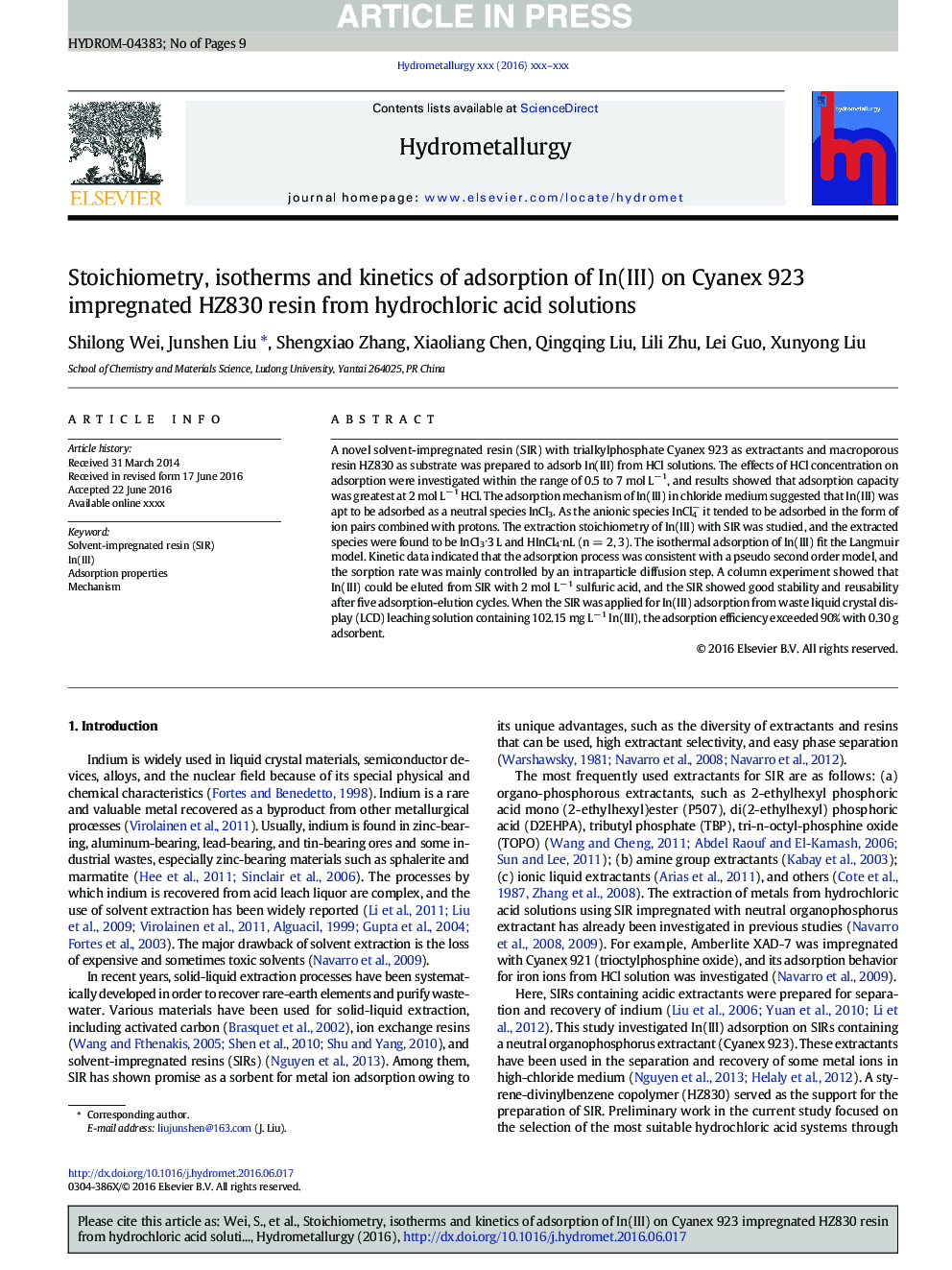| Article ID | Journal | Published Year | Pages | File Type |
|---|---|---|---|---|
| 4769061 | Hydrometallurgy | 2016 | 9 Pages |
Abstract
A novel solvent-impregnated resin (SIR) with trialkylphosphate Cyanex 923 as extractants and macroporous resin HZ830 as substrate was prepared to adsorb In(III) from HCl solutions. The effects of HCl concentration on adsorption were investigated within the range of 0.5 to 7 mol Lâ 1, and results showed that adsorption capacity was greatest at 2 mol Lâ 1 HCl. The adsorption mechanism of In(III) in chloride medium suggested that In(III) was apt to be adsorbed as a neutral species InCl3. As the anionic species InCl4â it tended to be adsorbed in the form of ion pairs combined with protons. The extraction stoichiometry of In(III) with SIR was studied, and the extracted species were found to be InCl3·3 L and HInCl4·nL (n = 2, 3). The isothermal adsorption of In(III) fit the Langmuir model. Kinetic data indicated that the adsorption process was consistent with a pseudo second order model, and the sorption rate was mainly controlled by an intraparticle diffusion step. A column experiment showed that In(III) could be eluted from SIR with 2 mol Lâ 1 sulfuric acid, and the SIR showed good stability and reusability after five adsorption-elution cycles. When the SIR was applied for In(III) adsorption from waste liquid crystal display (LCD) leaching solution containing 102.15 mg Lâ 1 In(III), the adsorption efficiency exceeded 90% with 0.30 g adsorbent.
Related Topics
Physical Sciences and Engineering
Chemical Engineering
Chemical Engineering (General)
Authors
Shilong Wei, Junshen Liu, Shengxiao Zhang, Xiaoliang Chen, Qingqing Liu, Lili Zhu, Lei Guo, Xunyong Liu,
